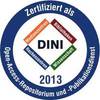Preview |
PDF, English
Download (47MB) | Terms of use |
Abstract
In this thesis, we investigate the phase structure of Quantum Chromodynamics (QCD) at high densities, with the aim of locating the critical endpoint (CEP) of its temperature crossover transition. To this end, we utilise the functional Renormalization Group (fRG) to directly compute non-perturbative QCD from first principles. Aiming for quantitative predictions, we both develop important numerical tools and investigate the systematics of functional QCD to correctly assess the systematic error of our approach. Hydrodynamic methods are introduced as a powerful tool to resolve full field dependences in general fRG setups. We develop a local Discontinuous Galerkin (LDG) Finite Element (FE) method for unprecedented quantitative precision and reliability for this task. For the task of resolving corresponding effective potentials, we develop new classes of regulators for dynamical spontaneous symmetry breaking (dSSB) and find optimal RG-time integration algorithms for the highly stiff partial differential equations (PDEs) of such systems. The vertex expansion employed for the glue sector of functional QCD requires a careful treatment of tensor bases, and we discuss optimisation aspects thereof in detail. Furthermore, we introduce the LEGO® principle to formalise the modular structure of functional QCD, which we will use for our systematic error estimates. We show the quantitative reliability of our approach in vacuum QCD and illustrate that the finite temperature limit thereof is in great agreement with results from other first-principle approaches. For the first time in the fRG, a reliable systematic error estimate is provided for the corresponding observables, in particular for the pseudo-critical temperature Tpc = 156.7 ± 0.6 MeV. We resolve the QCD phase structure up to baryon chemical potential µB = 1000 MeV and find a sizeable regime with a potential inhomogeneous instability covering the potential critical endpoint (CEP) of QCD.
| Document type: | Dissertation |
|---|---|
| Supervisor: | Pawlowski, Prof. Dr. Jan Martin |
| Place of Publication: | Heidelberg |
| Date of thesis defense: | 21 May 2025 |
| Date Deposited: | 28 May 2025 13:20 |
| Date: | 2025 |
| Faculties / Institutes: | The Faculty of Physics and Astronomy > Institute for Theoretical Physics |
| DDC-classification: | 500 Natural sciences and mathematics 530 Physics |
| Controlled Keywords: | Quantenchromodynamik, Renormierung, Numerik, Theoretische Physik |
| Uncontrolled Keywords: | Funktionale Renormierungsgruppe |









